Image: NASA barge Pegasus with Artemis core inside arrives at Kennedy Space Center Turn Basin.
From the Ocean to the Moon
By Burt Dicht, NSS Managing Director of Membership
Photo credits: Burt Dicht
Waiting for the unloading of a barge might not sound like an exciting way to spend a morning under the hot Florida sun along the space coast. However, this particular barge, NASA’s Pegasus, was carrying an impressive cargo: the 212-foot-long core stage that will power the Artemis II mission on its journey to the Moon in September 2025. At around 9 a.m. EDT on July 24, Kennedy Space Center (KSC) workers from Exploration Ground Systems (EGS) began carefully moving the massive rocket out of its protective shelter, revealing the RS-25 engine nozzles. At that moment, I realized that this slow-moving, meticulously choreographed operation was going to be fascinating to watch.
The Artemis II Core Stage had arrived about 24 hours earlier on the Pegasus after a 900-mile voyage that included traversing the open ocean and intercoastal waterways from NASA’s Michoud Assembly Facility (MAF) near New Orleans. The Pegasus is a specially designed barge owned by NASA, originally used to transport space shuttle external tanks to KSC. It had to be modified and refurbished to accommodate the core stage, which is more than 50 feet longer than the shuttle tanks.
Upon arrival, the Pegasus was guided by two tugboats into the KSC Turn Basin, where it was docked for unloading. The core stage was then moved using a Self-Propelled Module Transporter (SPMT). These multi-wheeled transporters are designed to move large and heavy loads with precise maneuverability. The journey from the barge to the Vehicle Assembly Building (VAB), which spanned more than half a mile and required several turns, was made possible by the SPMTs. It was impressive to see this enormous 27.6-ft diameter, 188,000-lb orange rocket make its way to the VAB.
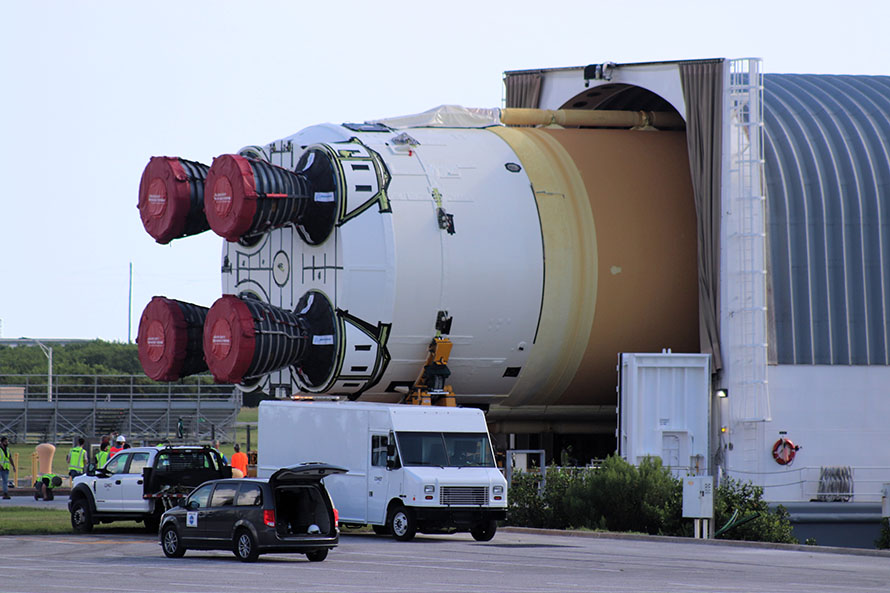
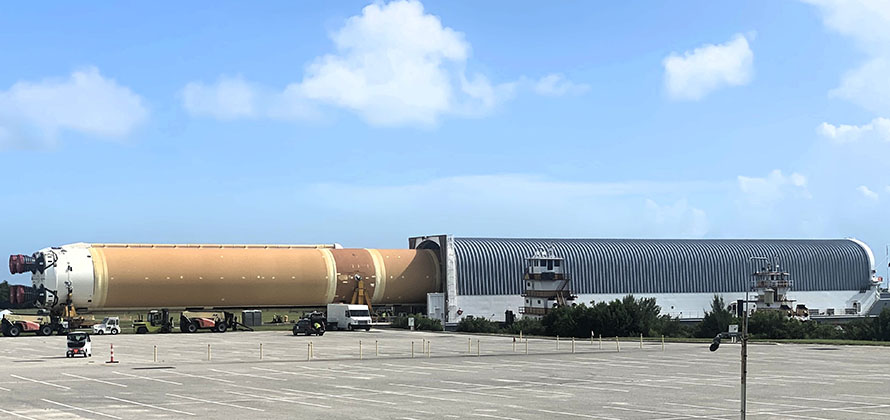
The entire move took about three hours, with many media personnel and KSC employees watching the slow yet thrilling journey. Over the next several weeks, the core stage will be processed before being lifted vertically into the VAB’s high bay 3, where it will eventually be mated with the other Artemis II components, including the Orion spacecraft and the Solid Rocket Boosters (SRBs). This work is part of a highly integrated process to ready Artemis II for its lunar mission next year.
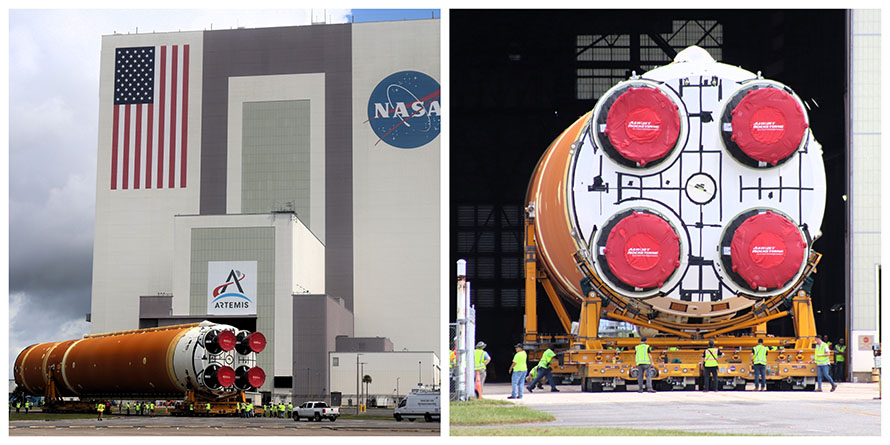
An essential part of this process is the Rotation, Processing, and Surge Facility (RPSF) at KSC, located near the VAB. The RPSF receives and processes the solid rocket booster segments for Artemis before they are moved to the VAB for stacking. This facility, constructed during the shuttle program, consists of a large open area called the high bay and contains several work stands and platforms to provide access to hardware during processing. During my tour of the facility, I had the opportunity to see the aft segments of the SRBs that will be used for Artemis II. In a nearby building called the surge facility, I could clearly see another SRB segment with the distinctive NASA worm logo.
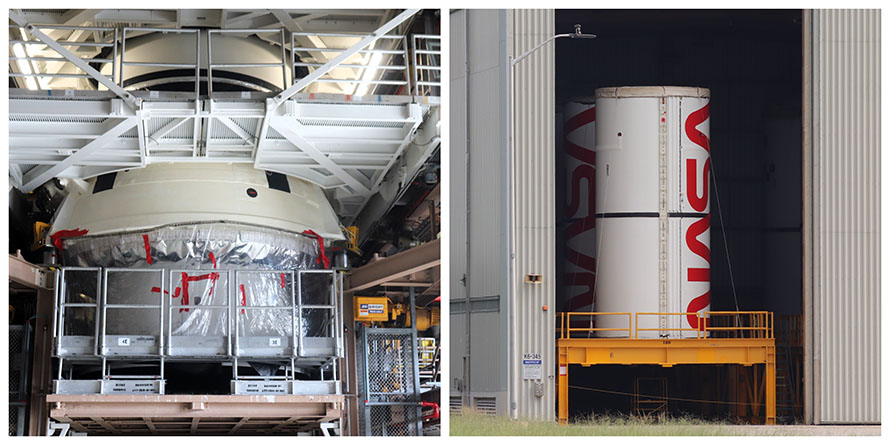
Meeting and talking with the talented members of the Artemis team was as impressive as seeing the Moon rocket hardware. I had the privilege of speaking with former NASA astronaut Doug Hurley. Doug retired from NASA in 2021 and now works for Northrop Grumman’s (NG) Propulsion Systems, the manufacturer of the Artemis SRBs, where he serves as Senior Director for Business Development. Doug, a former marine aviator and a 20+ year NASA veteran, flew as a pilot on STS-127, STS-135 (the final shuttle flight), and as the commander of SpaceX DM2 mission, the first crewed flight of the Crew Dragon spacecraft.
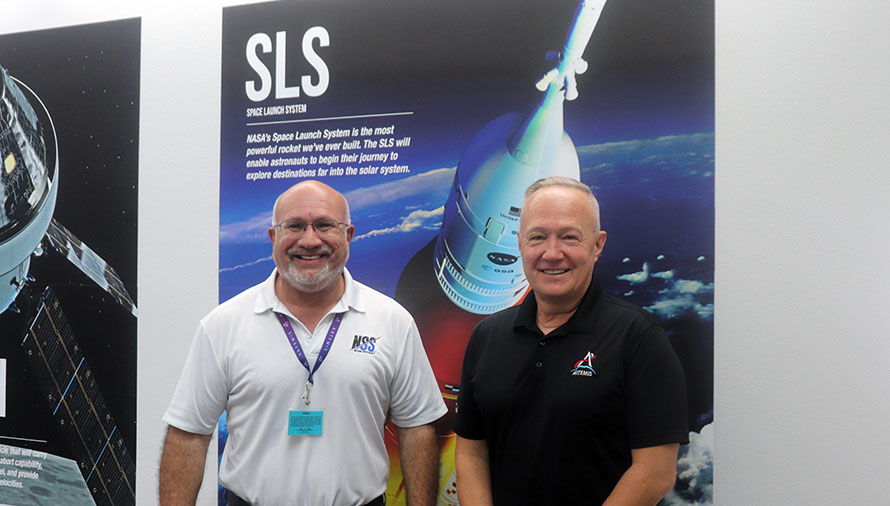
Doug views his new role in private industry as an extension of his career-long efforts to advance national security and the human space program. We discussed the performance of the SRBs on Artemis I, which he reported worked perfectly, burning out within 0.4 seconds of each other. He noted that while the SRB technology required no significant changes, they are continuously looking to improve processes and procedures. The Artemis SRBs are remodeled and refurbished from the shuttle program, and there are currently enough SRB segments to support missions through Artemis VIII. Doug expressed optimism about the Artemis program and, as an astronaut, looked forward to the next “small steps” on the Moon. For me personally, this experience was both exciting and inspirational, fueling dreams and the possibilities of our return to the Moon in the coming years.

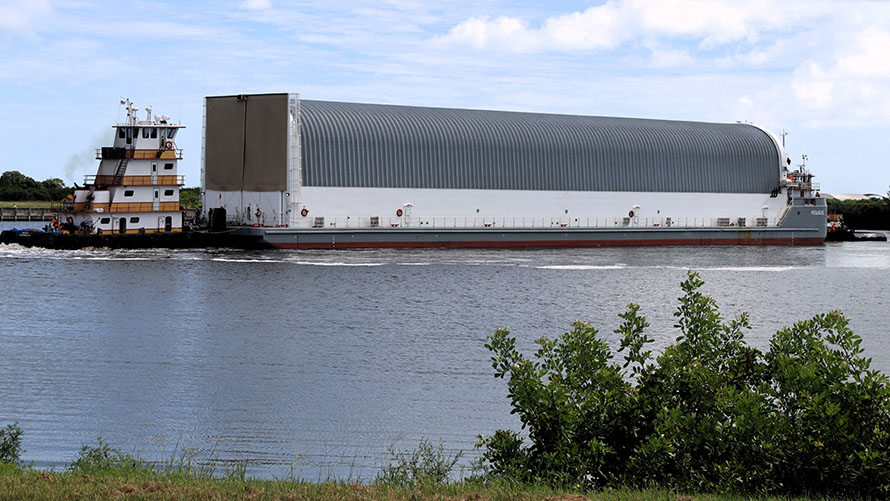
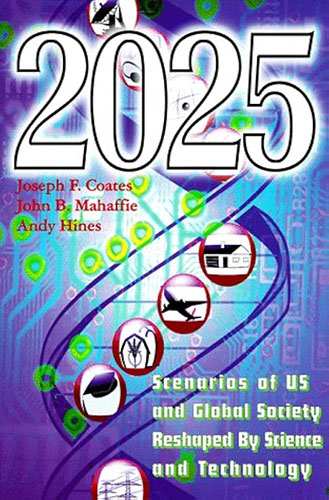
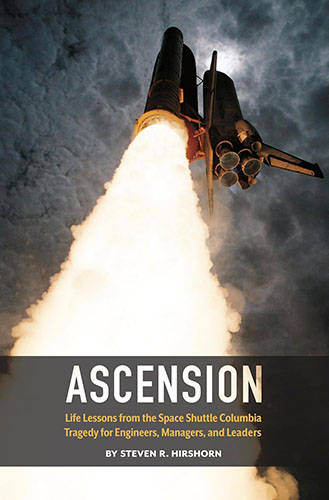
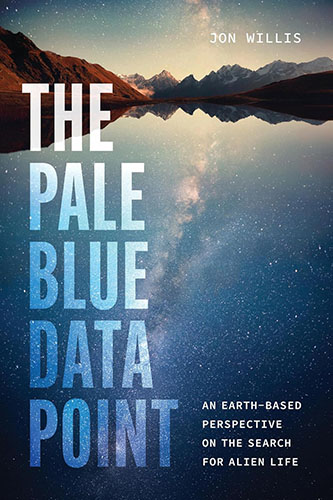
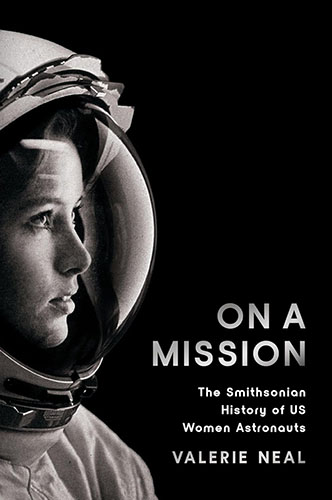

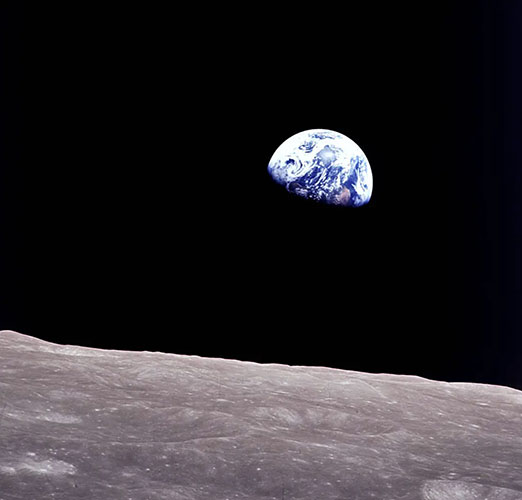
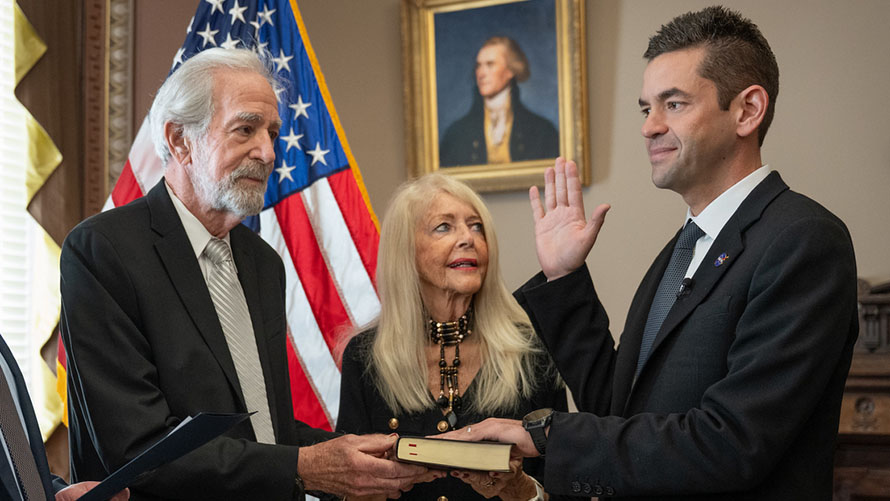
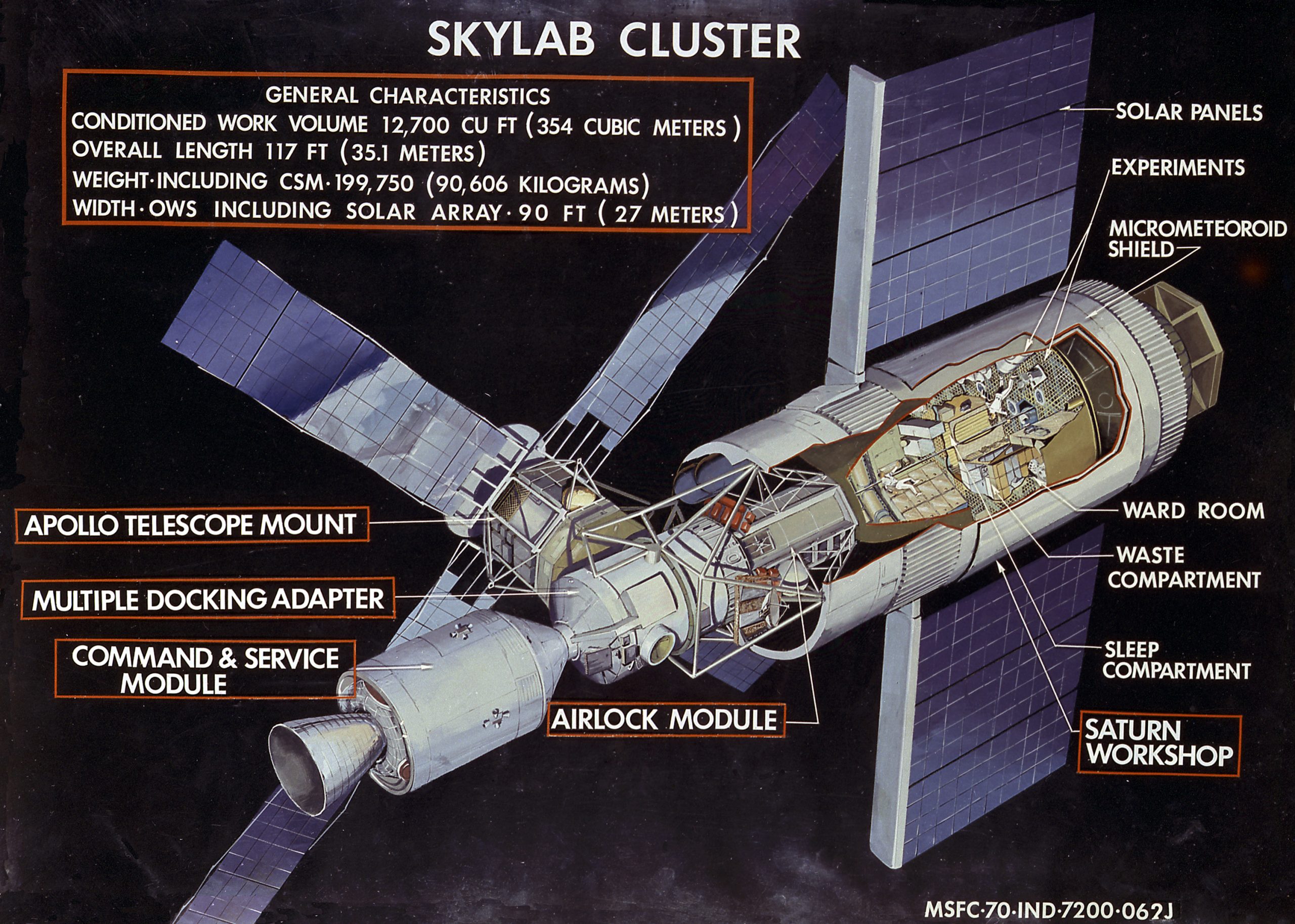
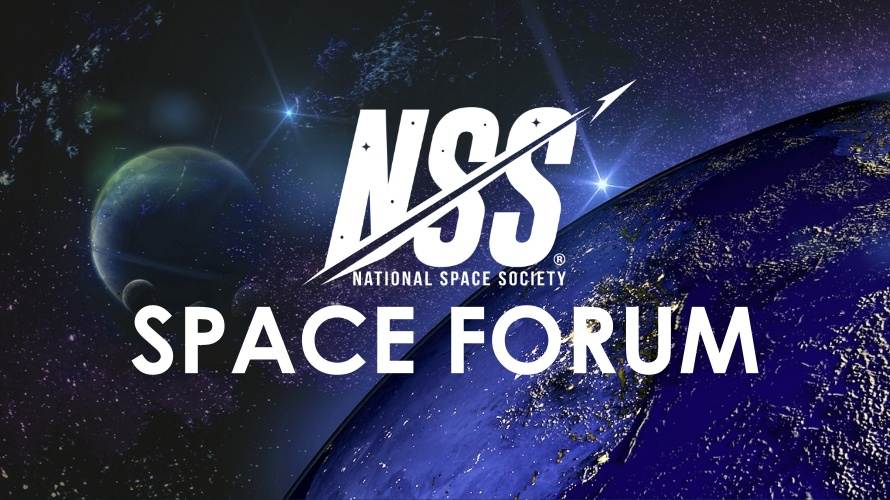


1 thought on “Witnessing the Artemis II Core Stage Arrival at Kennedy Space Center”
Great report Burt! Big thanks. Just another benefit of having the NSS HQ at the Cape.